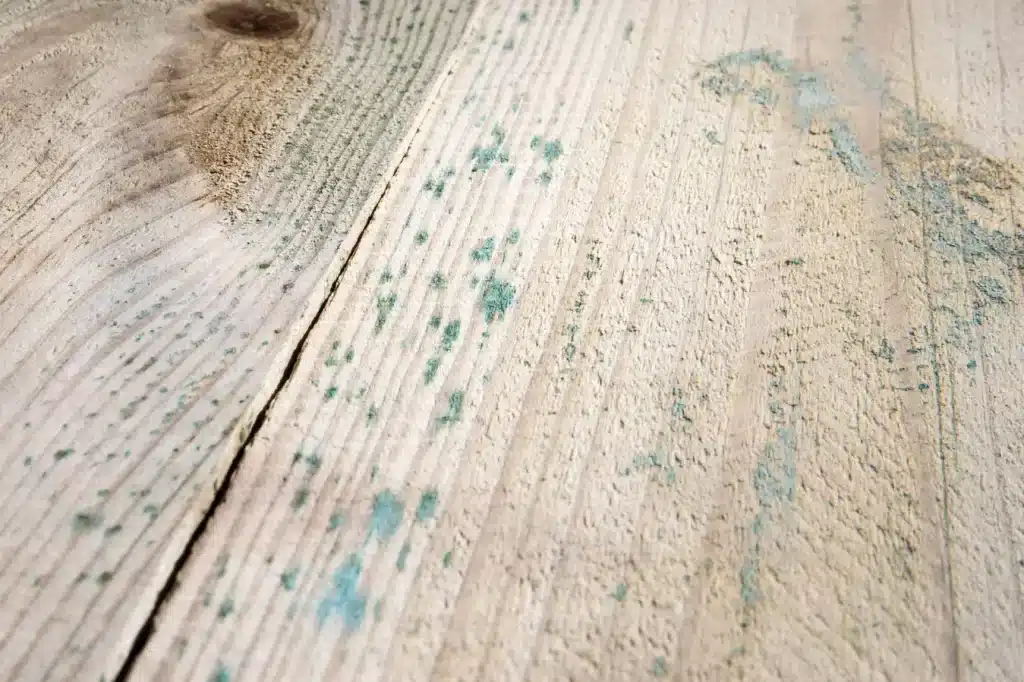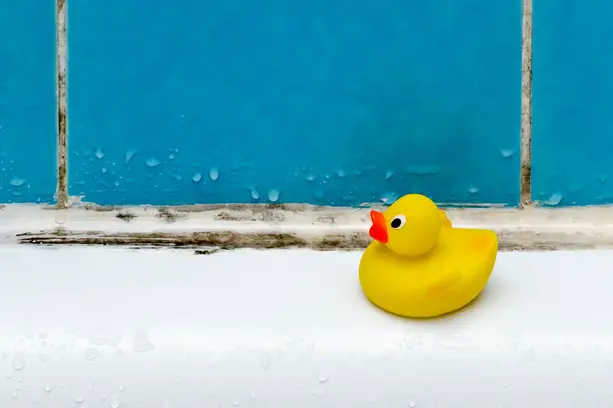Mold is a type of fungus that can grow indoors and outdoors, thriving in damp, warm, and humid environments. It reproduces through spores that can be carried by air currents, which means it can spread easily from one area to another. Sometimes, mold grows on furniture or other things around the house, including wood. Mold can cause health issues in people and needs to be taken care of right away. In this article, we will learn about different types of mold. We will also answer the question, what does mold look like on wood?
Let’s learn more!
What is Mold?
Mold is comprised of numerous microscopic organisms that belong to the kingdom Fungi. It plays a crucial role in nature by breaking down dead organic matter. However, when mold grows in our homes, particularly on wood, it can cause damage to structures and pose health risks to individuals with allergies or compromised immune systems.
Different Types of Mold Growth
Mold comes in various species, but some common types that affect homes include:
- Aspergillus: Often found on food and in home heating, ventilation, and air conditioning systems.
- Cladosporium: Usually green or black and can grow on fabrics and woods under normal humidity levels.
- Stachybotrys Chartarum: Known as “black mold” and typically associated with poor indoor air quality arising from water damage or high humidity.

What Does Mold Look Like on Wood?
On wood surfaces, mold appears as irregular spots that can be white, green, black, or even blue. The texture can vary from fuzzy to slimy, depending on the type of mold and the level of moisture present.
Is it Staining or Mold?
Determining whether wood discoloration is due to staining or mold can be challenging. Stains are usually uniform and follow the wood grain, caused by the natural aging process of the wood or exposure to substances. Mold, on the other hand, looks blotchy and may come with a musty odor.
How to Get Rid of Mold on Wood?
Now that you have determined it is mold and not staining, there are some steps to follow to get rid of the mold.
To remove mold from wood:
- Start by protecting yourself with gloves, goggles, and a mask.
- Clean the area with a mixture of dishwashing detergent and warm water.
- If the mold persists, use a solution of diluted bleach (1 part bleach to 10 parts water) to scrub the affected area.
- Rinse the surface thoroughly with clean water and allow it to dry completely.
Remember, never mix bleach with ammonia or other household cleaners, as this can create toxic fumes.
Mold Growth and Effect on Health
According to the World Health Organization, a significant proportion of the world’s 300 million cases of childhood asthma is attributable to exposure to indoor dampness and mold. Moreover, living in damp and moldy homes increases the risk of respiratory diseases by 30-50%. These facts alone make it very important to get rid of the mold in the home.
What Are The Health Risks With Mold Exposure?
Mold exposure can lead to various health problems, particularly in individuals with respiratory conditions, allergies, or weakened immune systems. Some risks include respiratory infections, allergic reactions, asthma exacerbation, and irritation of the eyes, skin, nose, throat, and lungs

Maintenance to Keep Mold Away
Now that you know what mold looks like on wood, let’s look at other areas of maintenance to keep mold away.
One of those is cleaning mold off silicone. Due to moisture and water in the shower, mold can grow on silicone. You can avoid this by turning on an exhaust fan or installing a dehumidifier.
Another is smelling black mold in the home. The smell is very distinct- it has a musty odor and earthy scent. It smells a lot like a pile of dirt. If you do smell this, start looking around to see where it is coming from and take care of it right away.
Lastly, during a home inspection, mold may come up in the report. Do you still buy the home? It will depend on the amount of mold there is in the home. Usually, the seller will take care of the mold but it is important to have a good realtor so you know what the right decision is.
When Do I Call a Professional?
Mold is not something you should take care of alone if it is a large area. Remember, professionals are trained to get rid of mold. You should call a professional if the affected area is large (more than 10 square feet). Also, if you suspect the HVAC system is contaminated, a professional needs to look closer. Lastly, if you have health concerns about hidden mold or don’t feel comfortable doing the cleanup yourself.
Check out the video below about removing mold from wood.
Conclusion
Mold growth on wood is not only an aesthetic concern but presents serious health risks and structural integrity issues. Understanding the difference between stains and mold, recognizing potential health effects, and employing effective cleaning and preventive strategies are vital for maintaining a safe and healthy living environment. Always seek professional assistance when needed to ensure thorough and safe mold removal. Call Edifice Inspections in Peachtree Corners, GA for a mold inspection.


1 Comment
Comments are closed.